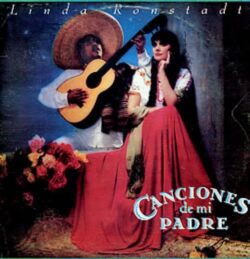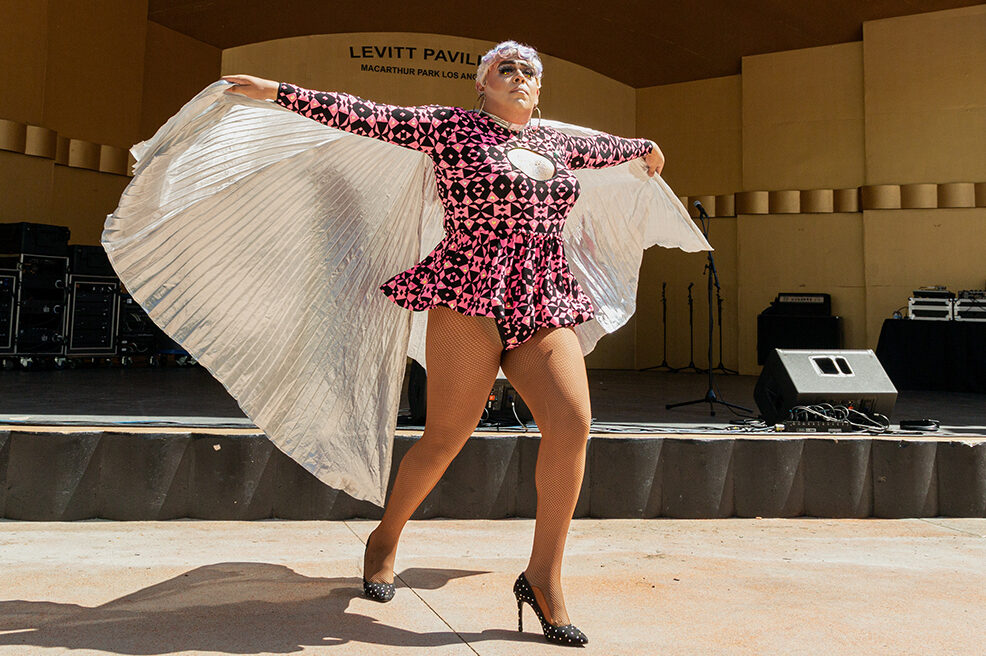Tell us about you, where you are, and your pathway to playing the requinto guitar and performing trío romántico music? What is trío romántico?
 I am a musician, music educator, and I also work on other music-related projects in museum or archive settings. I am passionate about Latin American music and about traditional music in generaI. I grew up in predominantly Mexican neighborhoods in Los Angeles and Brownsville, Texas. My parents both came to the US from Mexico in their teens and when I was a kid, we traveled to Mexico frequently to visit family. I remember seeing mariachis and trío romántico groups every now and then at family and church events or at festivals, but it wasn’t until my early college years that I became very interested in ranchera and bolero music. One day I came across Linda Ronstadt’s album Canciones de Mi Padre and I completely fell in love with sones, huapangos, rancheras, and guitar.
I am a musician, music educator, and I also work on other music-related projects in museum or archive settings. I am passionate about Latin American music and about traditional music in generaI. I grew up in predominantly Mexican neighborhoods in Los Angeles and Brownsville, Texas. My parents both came to the US from Mexico in their teens and when I was a kid, we traveled to Mexico frequently to visit family. I remember seeing mariachis and trío romántico groups every now and then at family and church events or at festivals, but it wasn’t until my early college years that I became very interested in ranchera and bolero music. One day I came across Linda Ronstadt’s album Canciones de Mi Padre and I completely fell in love with sones, huapangos, rancheras, and guitar.
I had purchased a Los Panchos CD around the same time and fell in love with bolero music as well. I took classical guitar lessons at Los Angeles Valley College and learned to play mariachi guitar during my involvement with the city of San Fernando’s Mariachi Master Apprentice Program. I continued my classical guitar and mariachi studies as an undergrad at UCLA. I played in various mariachi groups in Los Angeles and Washington DC after my undergrad years and while in graduate school.
In 2015 I began playing in a trío romántico, first as a vocalist and occasional guitarist. Trío romántico music developed in Mexico, Cuba, and Puerto Rico and gained popularity throughout Latin America in the late 1940s and 1950s. There are typically three musicians singing romantic songs in harmony and playing guitars. Central to the genre are boleros, songs with blissful, tortured and romantic elements. Boleros originated in Cuba and spread to other Latin American countries. Trío romántico groups can also play rancheras and regional styles such as Oaxacan waltzes. The melodies are mostly played by the requinto romántico and are often complex and virtuosic. The other guitarist(s) provide the bass, rhythm, and harmony. The group can also include a maraca player or other hand percussion instruments.
The blissful nature of this music in combination with the incredible musicality and complexity of the melodies, chord progressions, harmonies and poetry make for incredible art. All of these elements made me fall in love with the bolero and trío romántico tradition.
I have been a guitarist and principal singer in the group Voz Bohemia since 2017, and prior to the pandemic we performed at restaurants and bars during the week and occasionally on weekends at private events throughout Los Angeles. In 2018 my bandmate Jesús Martínez and I received the ACTA apprenticeship in order for him to teach me to play the requinto romántico, a soprano guitar used to play melodies in trío romántico ensembles and sometimes in ranchera duets or trios. Currently, Pepe Carlos from LA-based band La Santa Cecilia is my master teacher on the requinto through this year’s round of ACTA apprenticeships.
You’ve spoken about your work as “queering the trío romántico.” What does that mean to you?
I believe that all forms of art should reflect the diverse experiences of people, including gender identities and sexual orientations. As an active musician in a trío romántico, I also think that the ensemble’s repertoire and style should reflect the experiences and personality of each member and that our music should be inclusive to diverse audience members. I personally identify as a lesbian and have life experiences, perspectives, and have experienced challenges different from those of my bandmates, so I think the music should reflect that from time to time.
In order for our vibe to include the lesbian experience we perform songs that I sing from the perspective of a woman singing to another woman.
For example, the typical lyrics to the chorus of the ranchera song “Vámonos” are as follows:
Vámonos, donde nadie nos juzgue,
Donde nadie nos diga que hacemos mal.
Vámonos, alejados del mundo,
Donde no haya justicia, ni leyes, ni nada, nomás nuestro amor.
Lets go, where no one will judge us,
Where no one will tell us that we are doing something wrong.
Let’s go, far from the world,
Where there is no justice, no laws, nothing, just our love.
The song takes a whole other layer of meaning when the gendered word “alejados” is changed to “alejadas.” It makes the song specifically about two women lovers.
Are there elements of trío romántico music that make fertile ground for playing with queer experience and identities? Are there elements of the tradition that stifle that?
A good amount of bolero songs and rancheras are about a man singing to a woman, so like I mentioned above, we can play with the gendered words, change some letters and voilá, the song is instantly queer. Historically, there haven’t been well-known trío romántico groups with female members or with a woman instrumentalist in the group, so there is a lot freedom or room to play with in terms of style, repertoire, attire, etc.
There have been collaborations between women singers and trío romántico groups, such as Eydie Gormé and Los Panchos. She wasn’t necessarily a member of the group but one can argue that their rendition of “Sabor a mi” is one of the most beloved and well-known bolero recordings.
I think the trío romántico tradition can only benefit from more inclusivity rather than limiting it to only cisgender male voices.
In certain many parts of Latin America and in Latinx culture there is pressure for women to adhere to a certain aesthetic in order to be seen as professional or taken seriously. That can include wearing form fitting clothing, a certain make-up style and/or heels. I am all about women presenting themselves how they would like. Personally, I don’t femme it up in order to gain wider appeal or to be more palatable to mainstream audiences. I prefer to wear something similar to my bandmates and as a result our look happens to match what traditional trios looked like. In my trio Voz Bohemia we wear pants and matching or similar shirts. Sometimes we wear suits with bowties or matching guayaberas. We make it our own.




